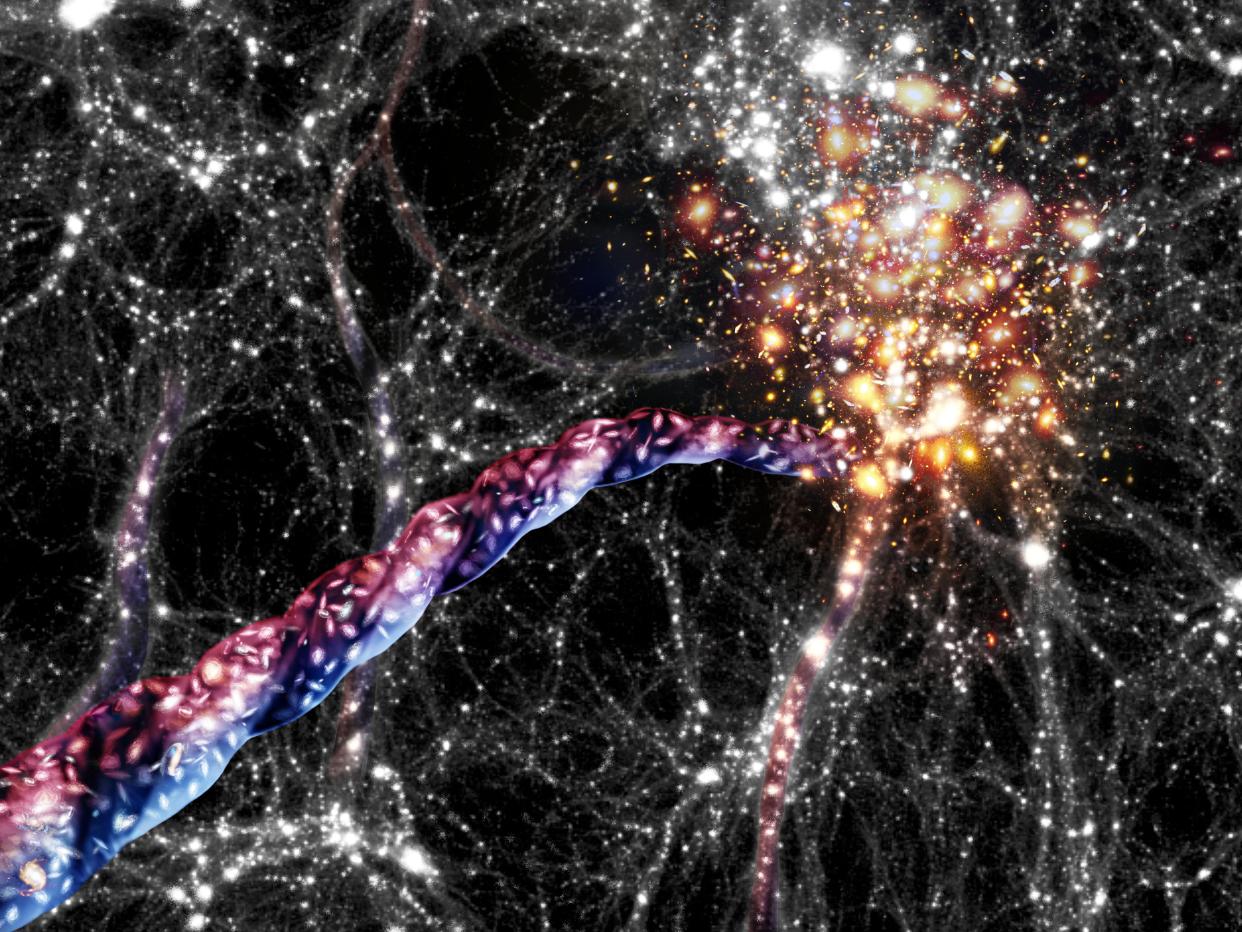Vast moving ‘space tendrils’ are the biggest spinning object in the universe – but science can’t explain them

Tendrils of galaxies hundreds of millions of light years long have been found to be the largest spinning object in the known universe.
Scientists discovered these massive phenomena when they were mapping the motion of cosmic filaments, bridges of galaxies and dark matter that connect the universe together and which funnel galaxies towards the large clusters at their ends.
After the universe was born from the Big Bang, 13.8 billion years ago, the gas that composed most known matter collapsed to form colossal sheets – which were then broken up to form the filaments of this enormous cosmic web.
The Hercules–Corona Borealis Great Wall is the largest of these discovered, estimated to be 10 billion light years long and home to several billion galaxies.
“Despite being thin cylinders – similar in dimension to pencils – hundreds of millions of light years long, but just a few million light years in diameter, these fantastic tendrils of matter rotate,” said Noam Libeskind, an astronomer at the Leibniz Institute for Astrophysics Potsdam (AIP).
“On these scales the galaxies within them are themselves just specs of dust. They move on helixes or corkscrew like orbits, circling around the middle of the filament while travelling along it. Such a spin has never been seen before on such enormous scales, and the implication is that there must be an as yet unknown physical mechanism responsible for torquing these objects.”
Exactly how the momentum is built up to rotate these enormous tendrils is one of the great mysteries of the cosmos, and one that scientists are keen to solve. The Big Bang did not give the universe a spin when it was created, and as such the cause must have come later in its life.
Scientists examined 17,181 filaments and 213,625 galaxies in total, analysing the velocity the galaxies in these massive tendrils moved. The motion of these galaxies suggests that they are rotating around the central axis of each filament, with the tendrils regulating the direction of their dark matter halos - invisible material that permeates and surrounds individual galaxies, and is responsible for their curves. The more massive the halo at either end of the filament, the more rotation is detected.
They also found that the tendrils were redshifted on one side, which is when light waves from an object moving away from the viewer move towards the red end of the electromagnetic spectrum (and the blue end if they are approaching the viewer). This is known as Doppler shifting, and shows that the entire enormous structure is moving.
“Angular momentum can be generated on unprecedented scales, opening the door to a new understanding of cosmic spin”, the scientists conclude in their study, published in Nature.
Read More
Scientists discover Earth’s core is growing ‘lopsided’ - and solve a 30 year-old mystery
Mysterious ‘elongated object’ that made giant star disappear puzzles scientists
Nasa says newly discovered ‘weird’ planet with ‘unknown’ atmosphere is remarkably similar to Earth

